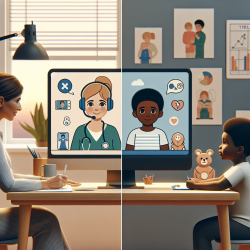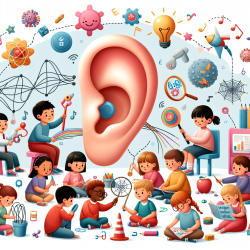As a dedicated practitioner in the field of speech-language pathology, staying abreast of the latest research is crucial for delivering the best possible outcomes for your clients. A recent pilot study titled A Pilot Study Comparing Teletherapy with the Conventional Face-to-Face Therapy for Speech-Language Disorders offers compelling insights into the efficacy of teletherapy as an alternative to traditional face-to-face sessions. Here, we delve into the findings of this study and discuss how you can leverage these insights to enhance your practice.
Key Findings from the Study
The study involved 20 patients with various speech and language disorders, including fluency, voice, swallowing, and neurogenic disorders. These patients initially received face-to-face therapy, followed by teletherapy sessions. The outcomes were evaluated using a structured questionnaire based on a Likert scale, focusing on 11 parameters.
- High Satisfaction Scores: The majority of patients (16 out of 20) preferred teletherapy over face-to-face therapy. Satisfaction scores were high, with most participants rating their experience as 4 or 5 on a 5-point scale.
- Clinician Satisfaction: Therapists also reported high satisfaction levels, particularly in terms of progress and overall satisfaction.
- Cost-Effectiveness and Convenience: Teletherapy was rated highly for its cost-effectiveness and convenience, making it a viable option for long-term care.
- Technological Barriers: Some participants reported issues with audio and video quality, underscoring the need for reliable technology.
Implementing Teletherapy in Your Practice
Based on these findings, here are some actionable steps to consider:
- Evaluate Technological Readiness: Ensure that both you and your clients have access to reliable internet connections and quality audio-visual equipment.
- Provide Training: Offer trial sessions to familiarize clients with the teletherapy platform and address any technical issues beforehand.
- Customize Therapy Plans: Use informal communication with clients and their families to tailor therapy sessions based on individual progress and needs.
- Monitor Satisfaction: Regularly assess client and clinician satisfaction to make necessary adjustments and improve the teletherapy experience.
Encouraging Further Research
While this pilot study provides valuable insights, it also highlights the need for further research. Larger, randomized controlled trials could offer more definitive evidence on the efficacy of teletherapy. Practitioners are encouraged to contribute to this growing body of research by documenting their experiences and outcomes.
To read the original research paper, please follow this link: A Pilot Study Comparing Teletherapy with the Conventional Face-to-Face Therapy for Speech-Language Disorders.










